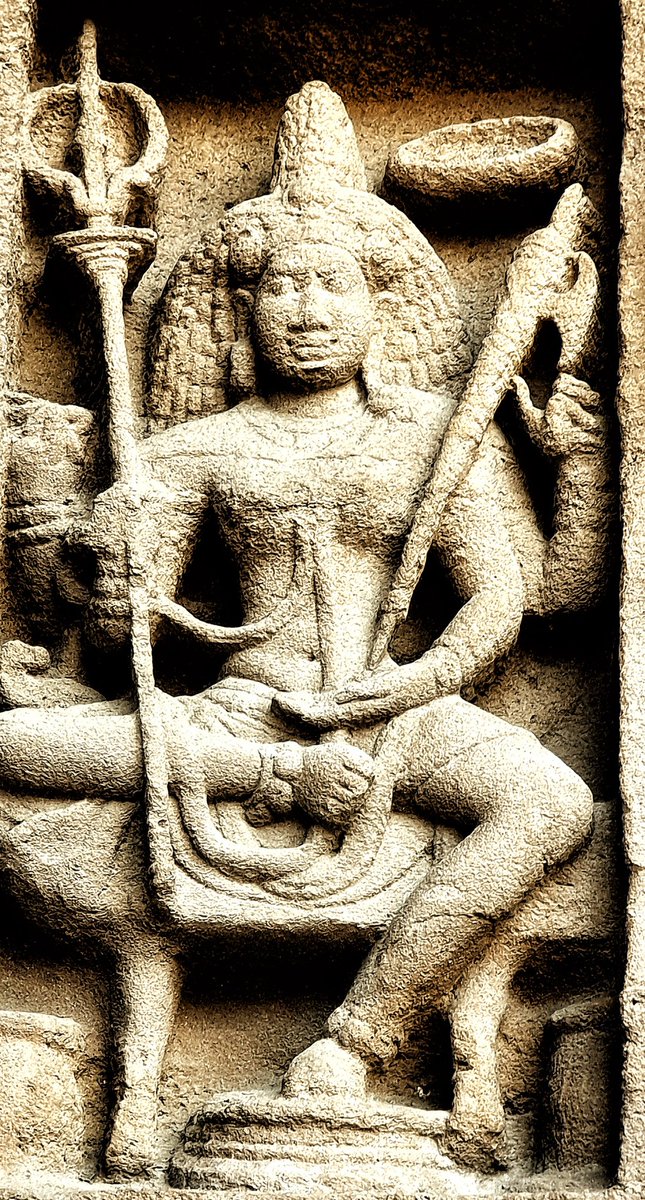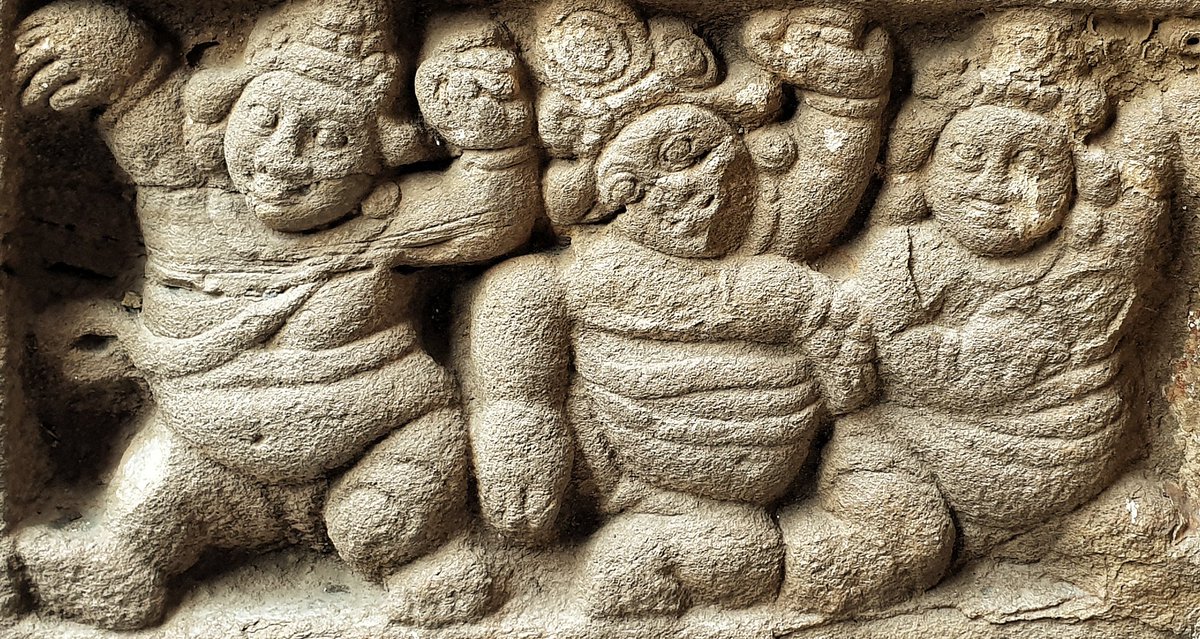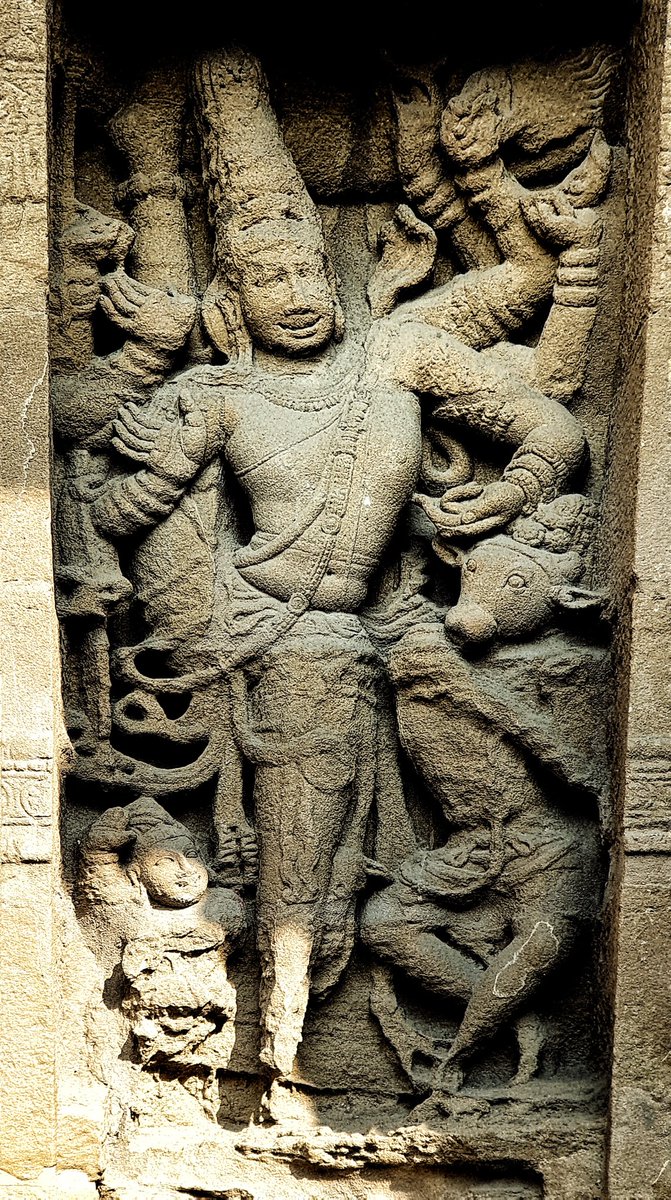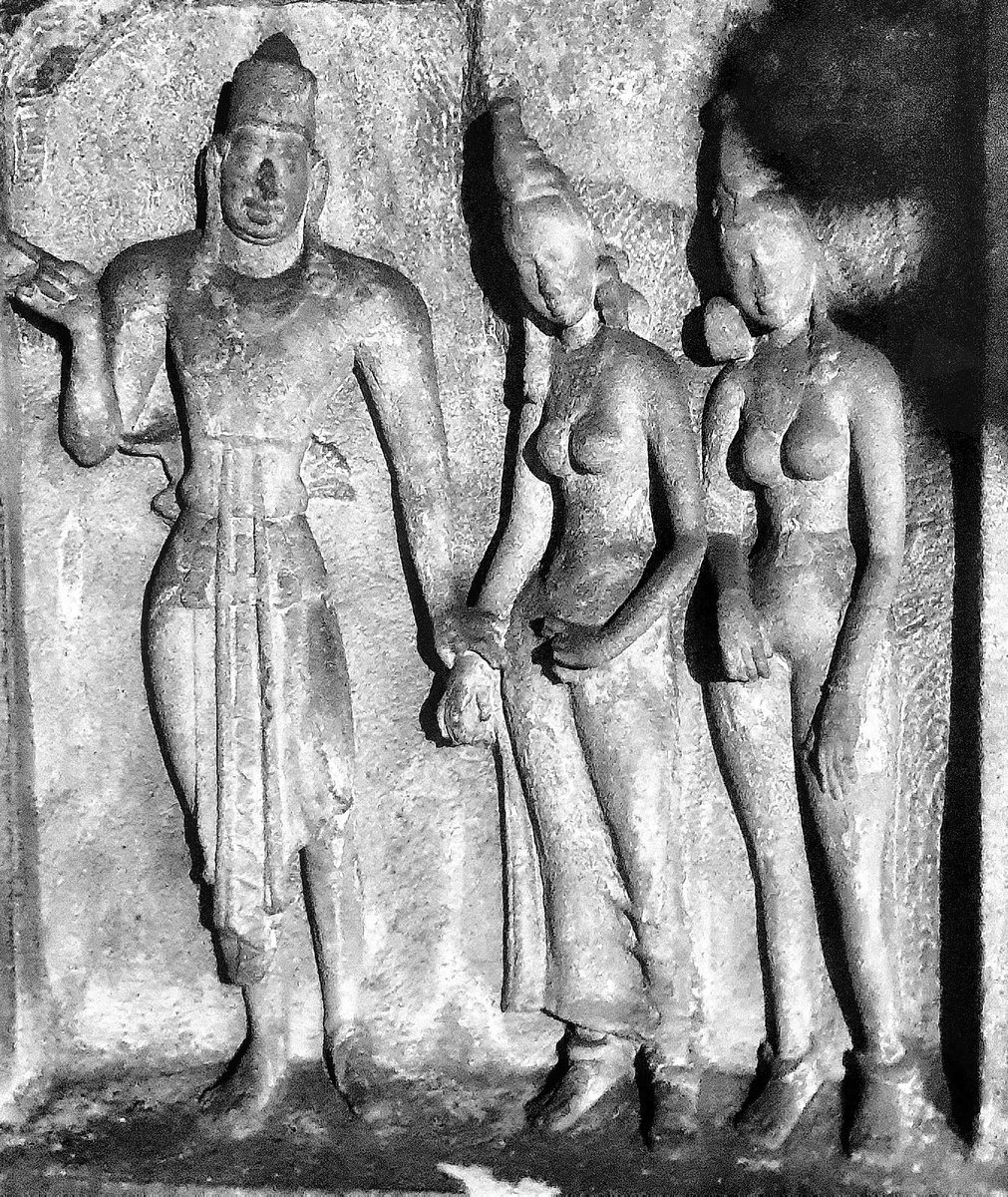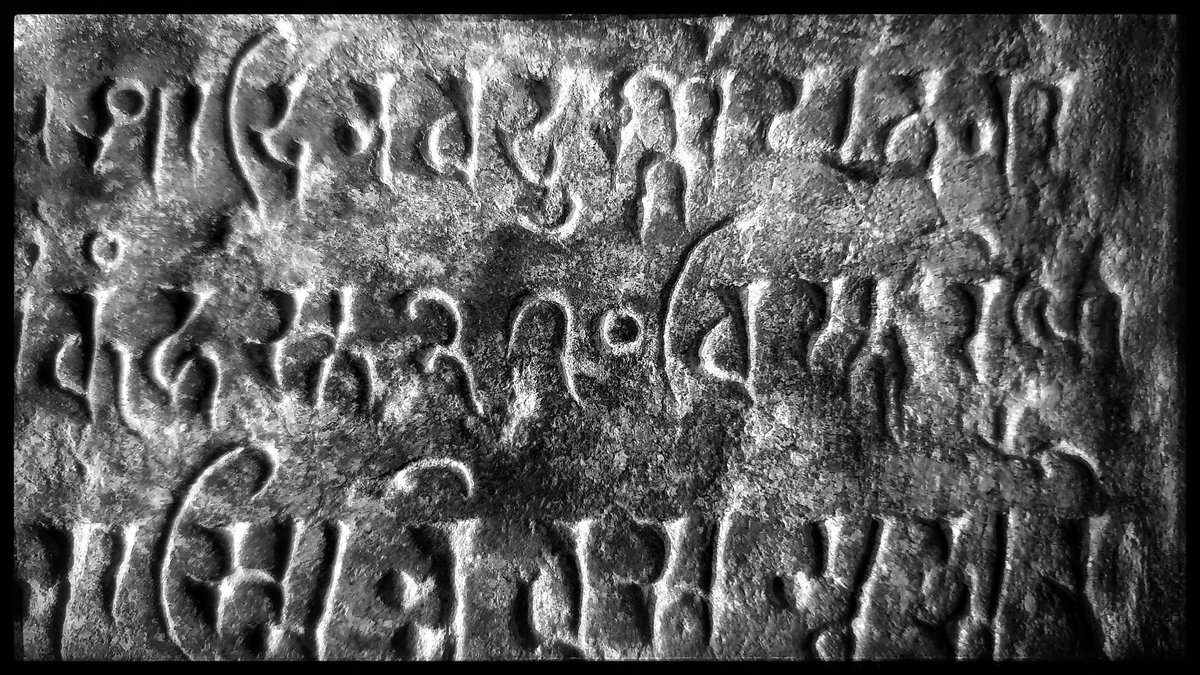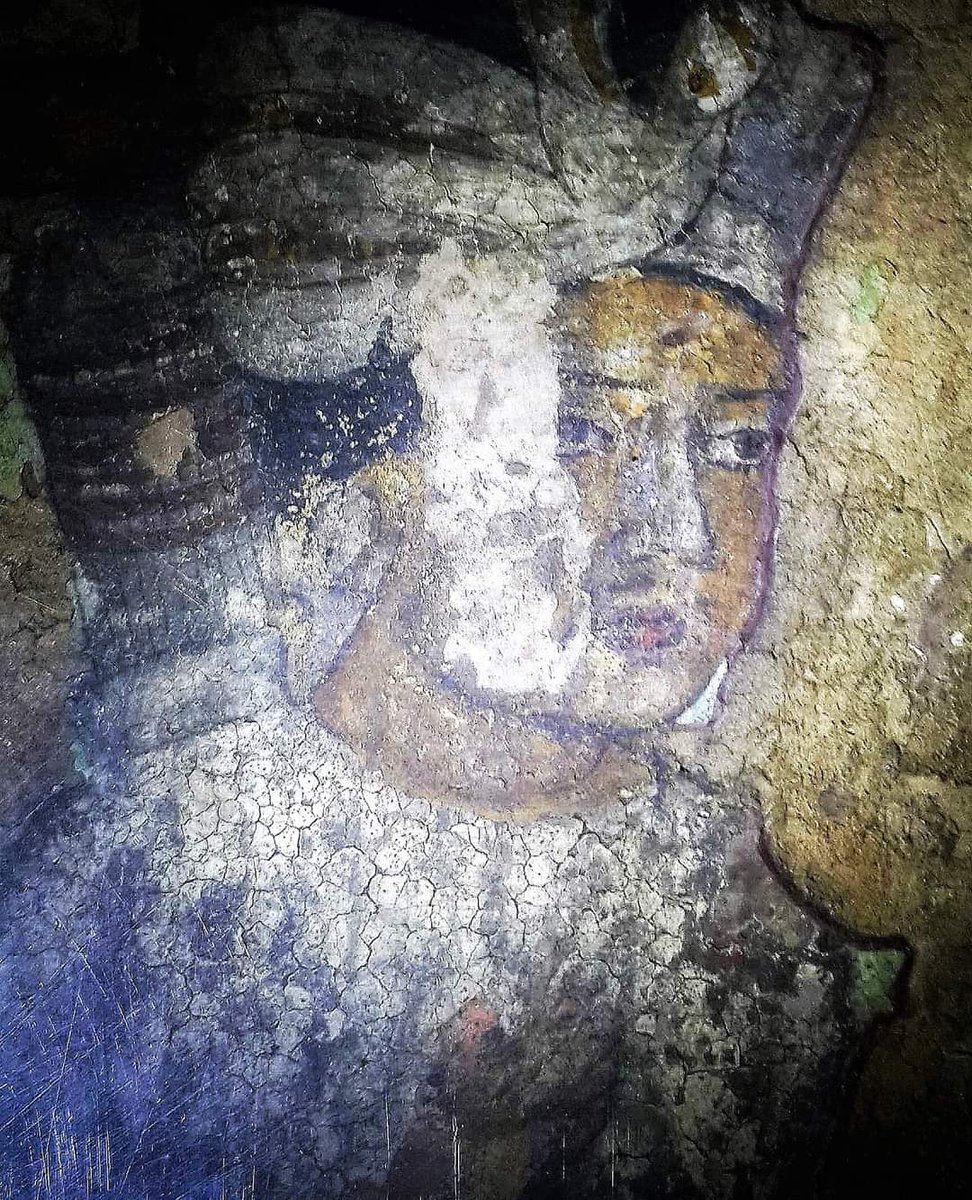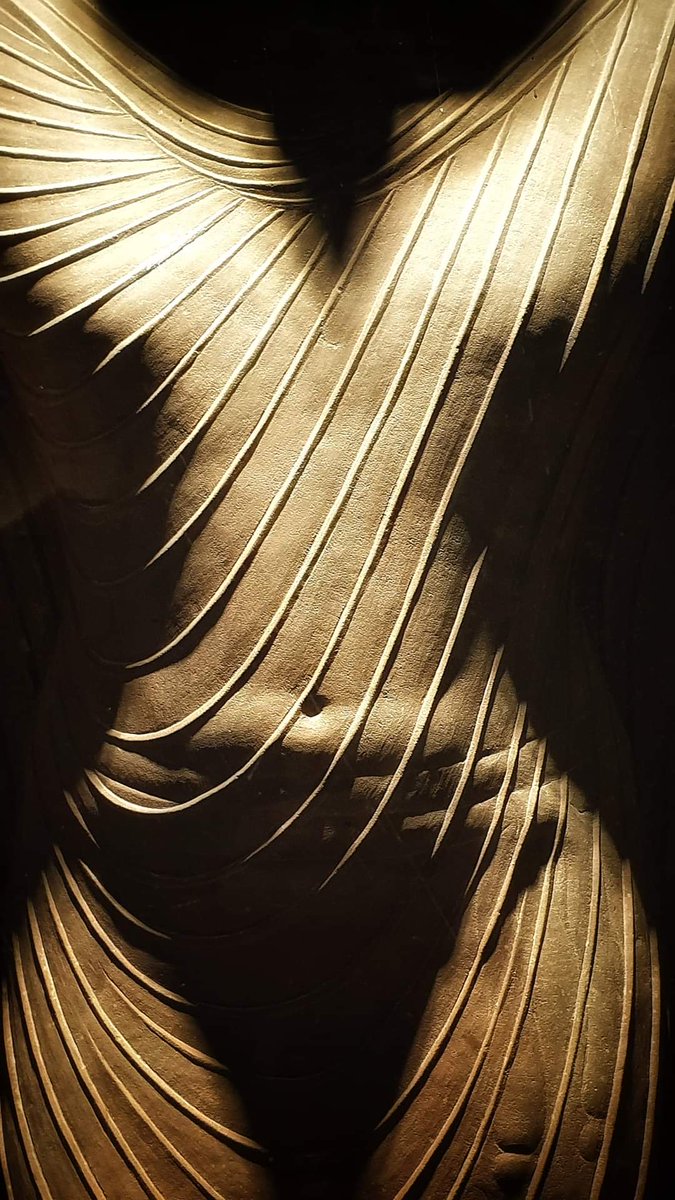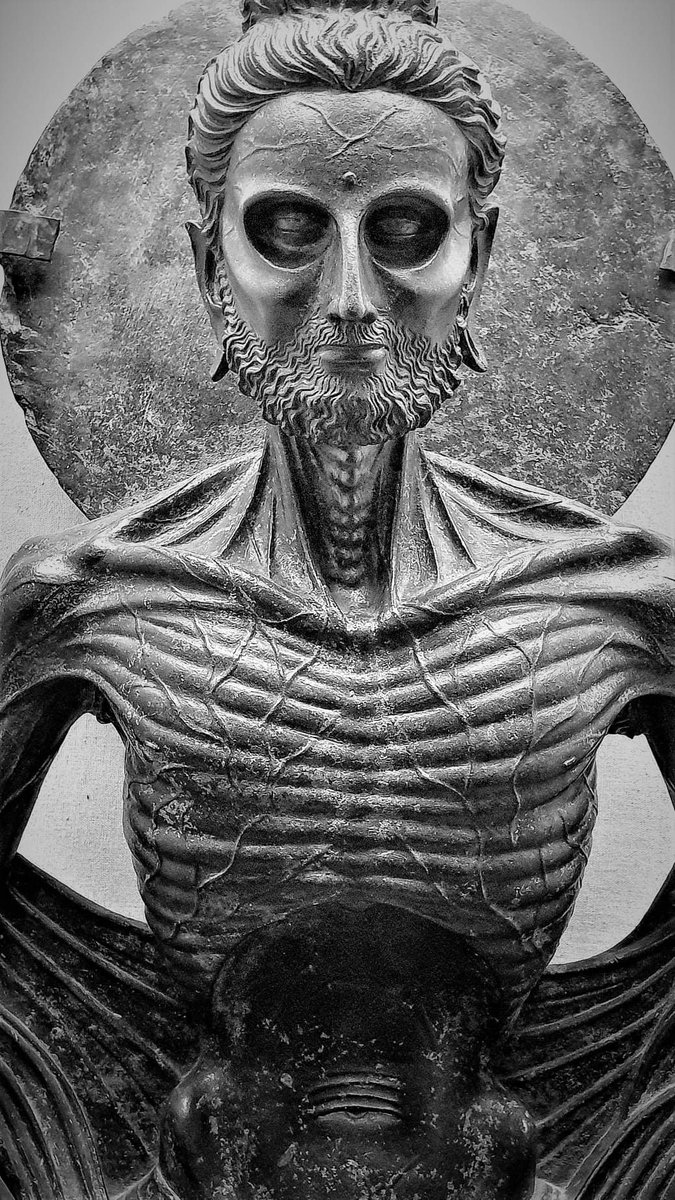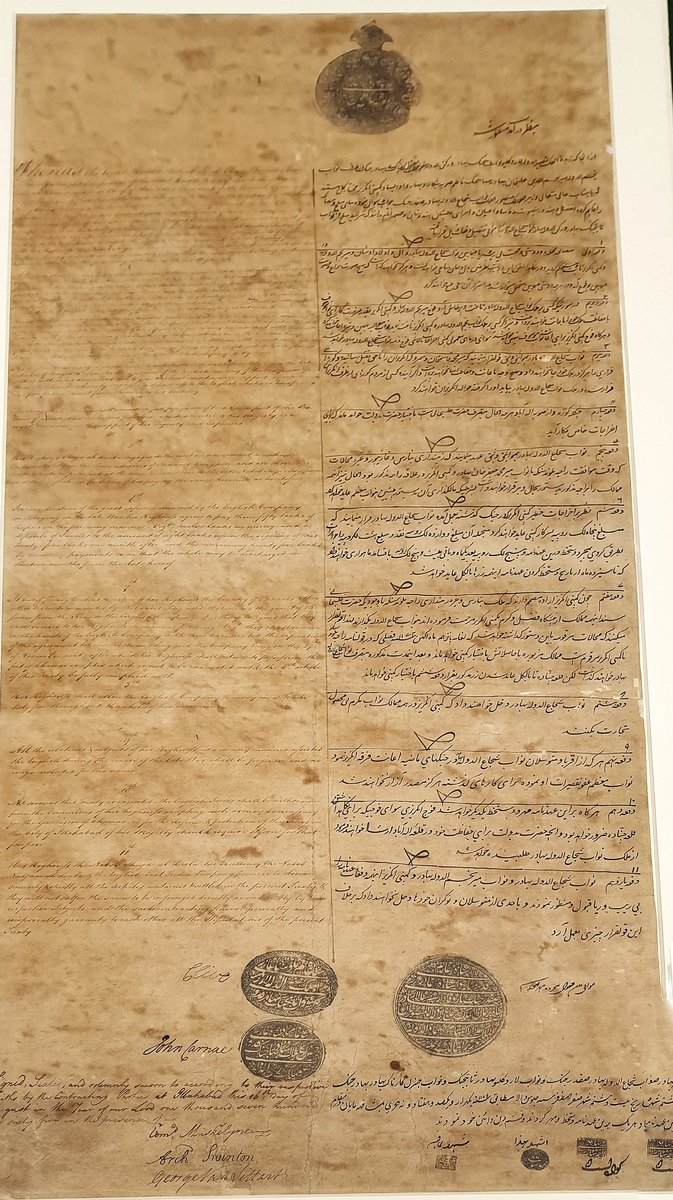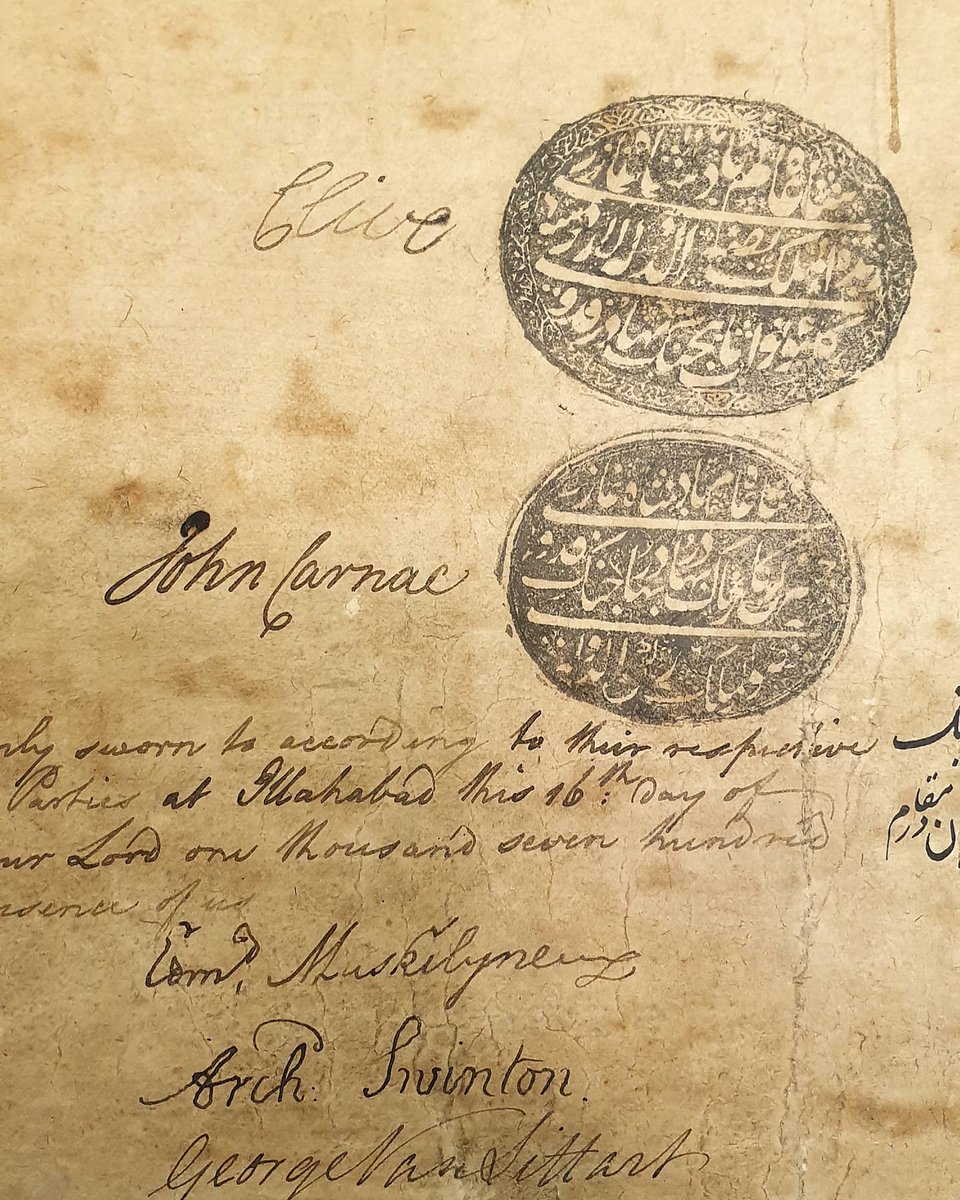
One last set of Pallava masterpieces from the exquisite Kailashanatha Temple of Rajasimha Pallava dating from 685 CE 

The sculptures of the north wall-
L- The Goddess Tripura-bhairavi
Middle- Tripurantaka or Tripurari Shiva, depicted with four arms wielding a bow and arrow
R- Durga on her lion (I think...)
L- The Goddess Tripura-bhairavi
Middle- Tripurantaka or Tripurari Shiva, depicted with four arms wielding a bow and arrow
R- Durga on her lion (I think...)
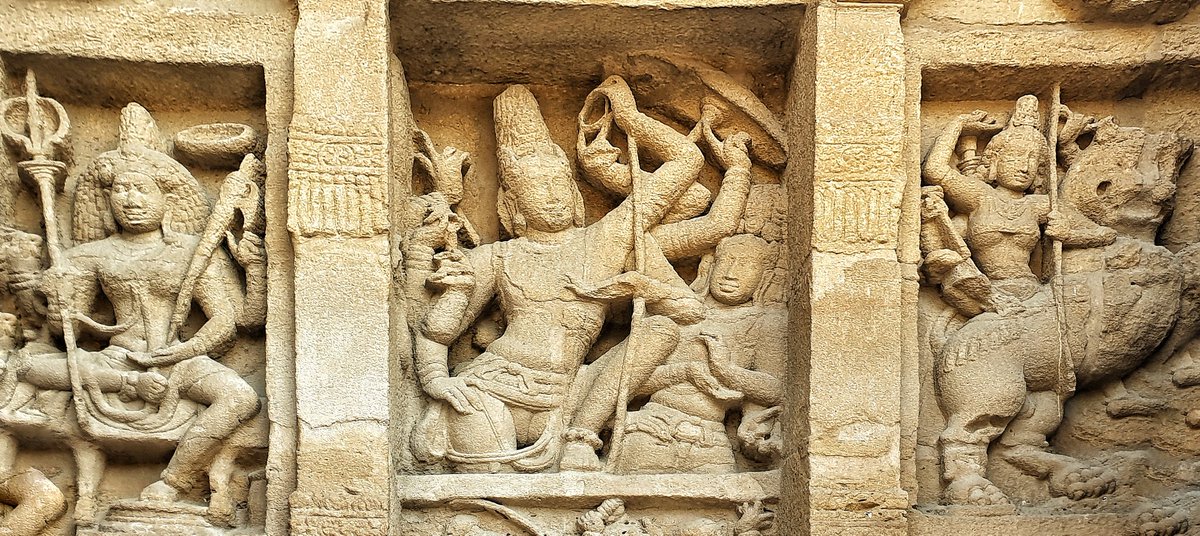
Siva as kirata fighting Arjuna
shrine on the South wall of the courtyard
Kailashanatha Temple
Kanchipuram
shrine on the South wall of the courtyard
Kailashanatha Temple
Kanchipuram

Detail of Shiva Tripurantaka or Tripurari Shiva, depicted with four arms wielding a bow and arrow
N wall of sanctum
Kailashanatha Temple
Kanchipuram
N wall of sanctum
Kailashanatha Temple
Kanchipuram

I was the only person looking around this exquisite structure and the ASI chowkidar complained about how few came to visit or study it. But its one of the great masterworks of Indian civilization and deserves far greater fame than it has. 

For anyone wishing to read more, I recommend this fine essay by R Nagaswamy in an old Vidya Dehejia edited Marg volume, Royal Patrons 



Finally a BBC broadcast I did a few years back on Mahendra Pallava and Pallava art
bbc.co.uk/programmes/b06…
bbc.co.uk/programmes/b06…
On Pallava influence in SE Asia:
nybooks.com/articles/2015/….
nybooks.com/articles/2015/….
• • •
Missing some Tweet in this thread? You can try to
force a refresh
